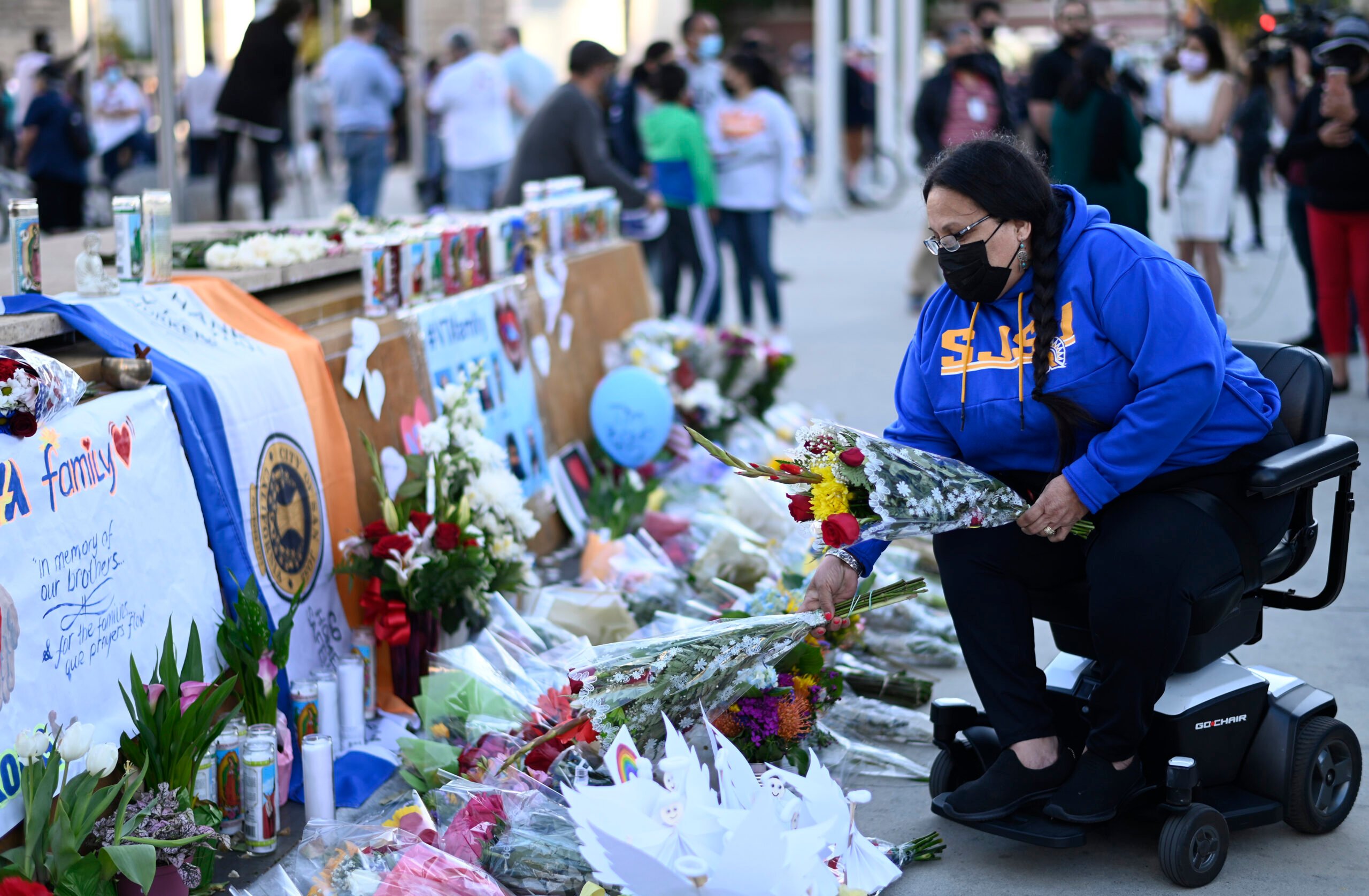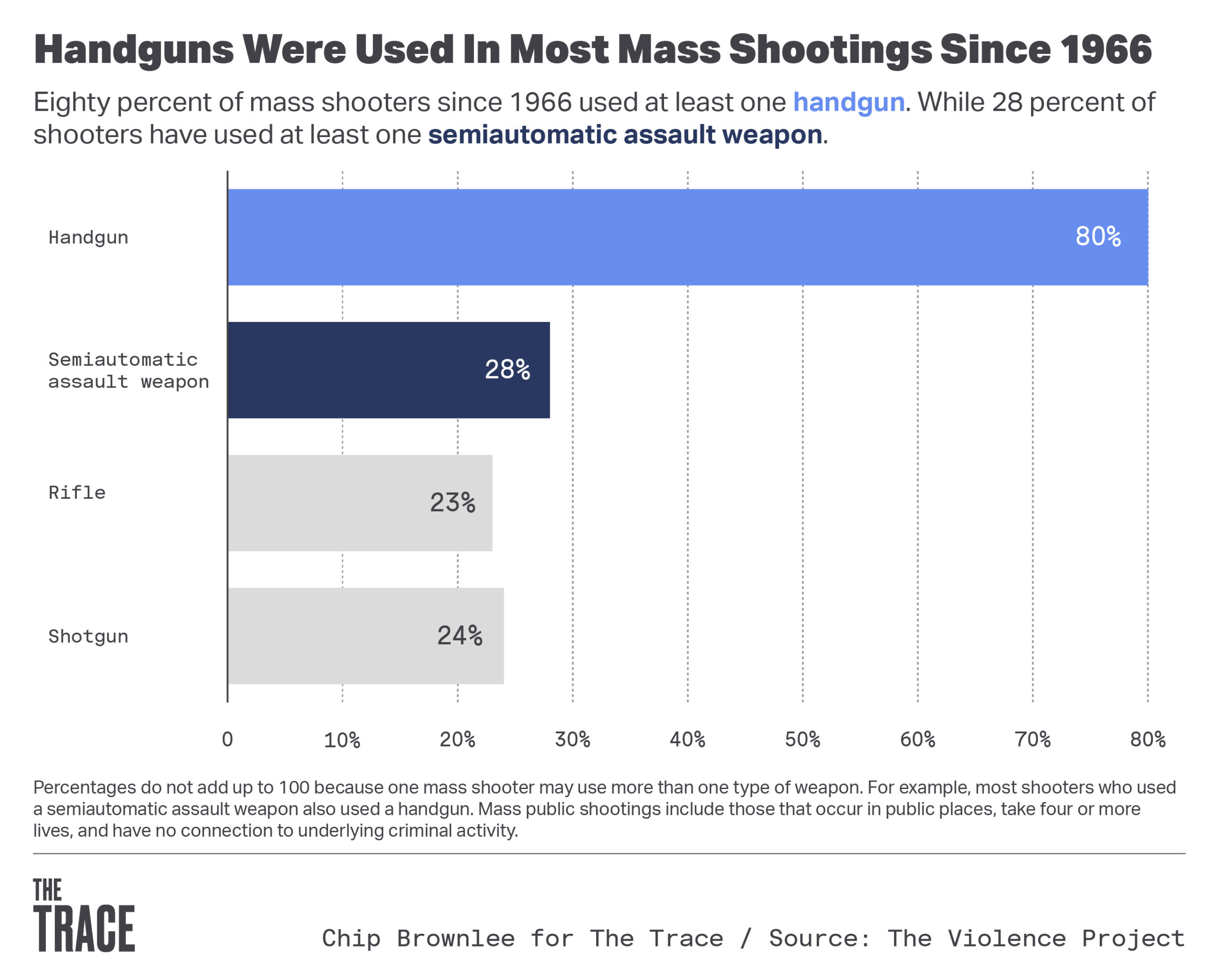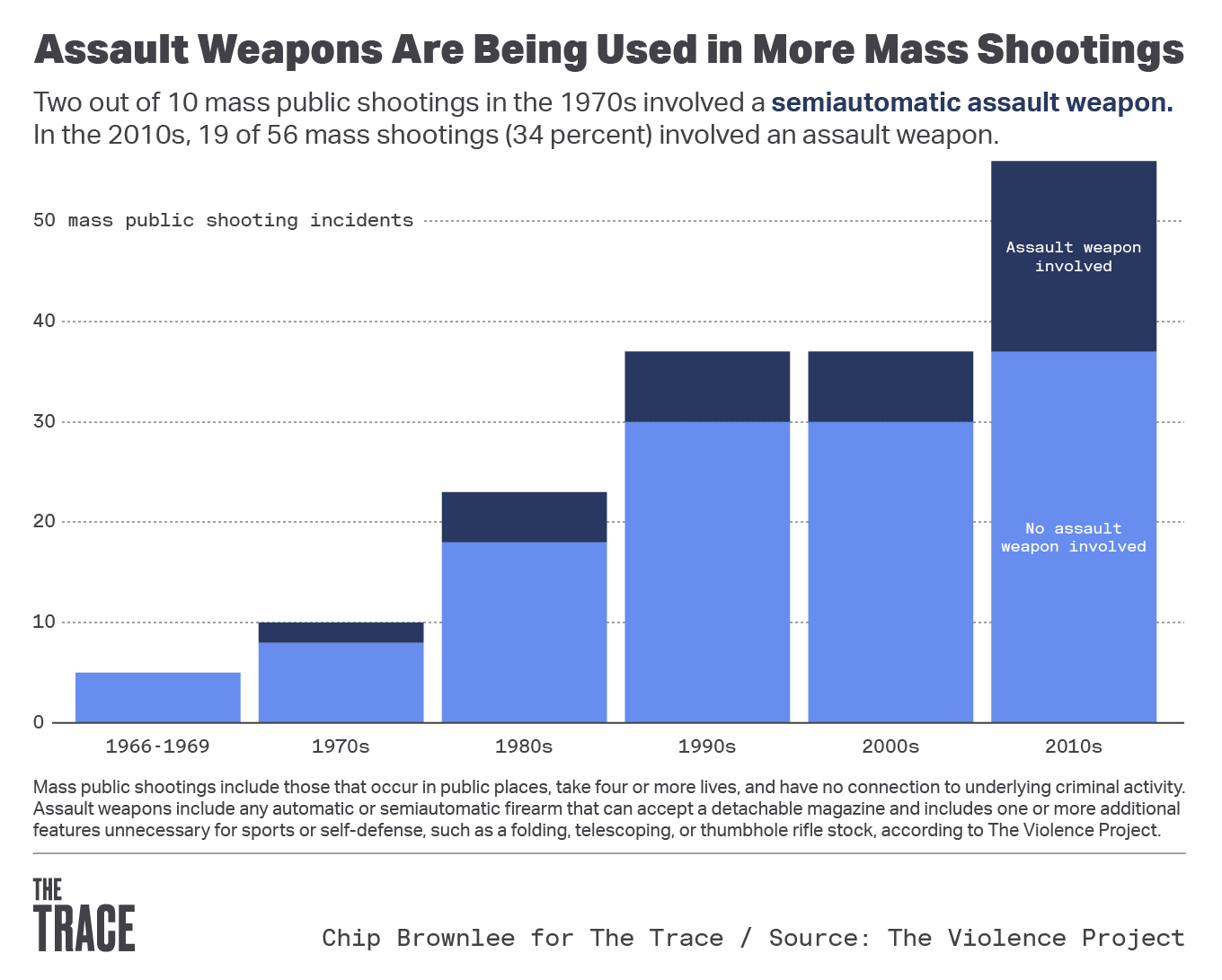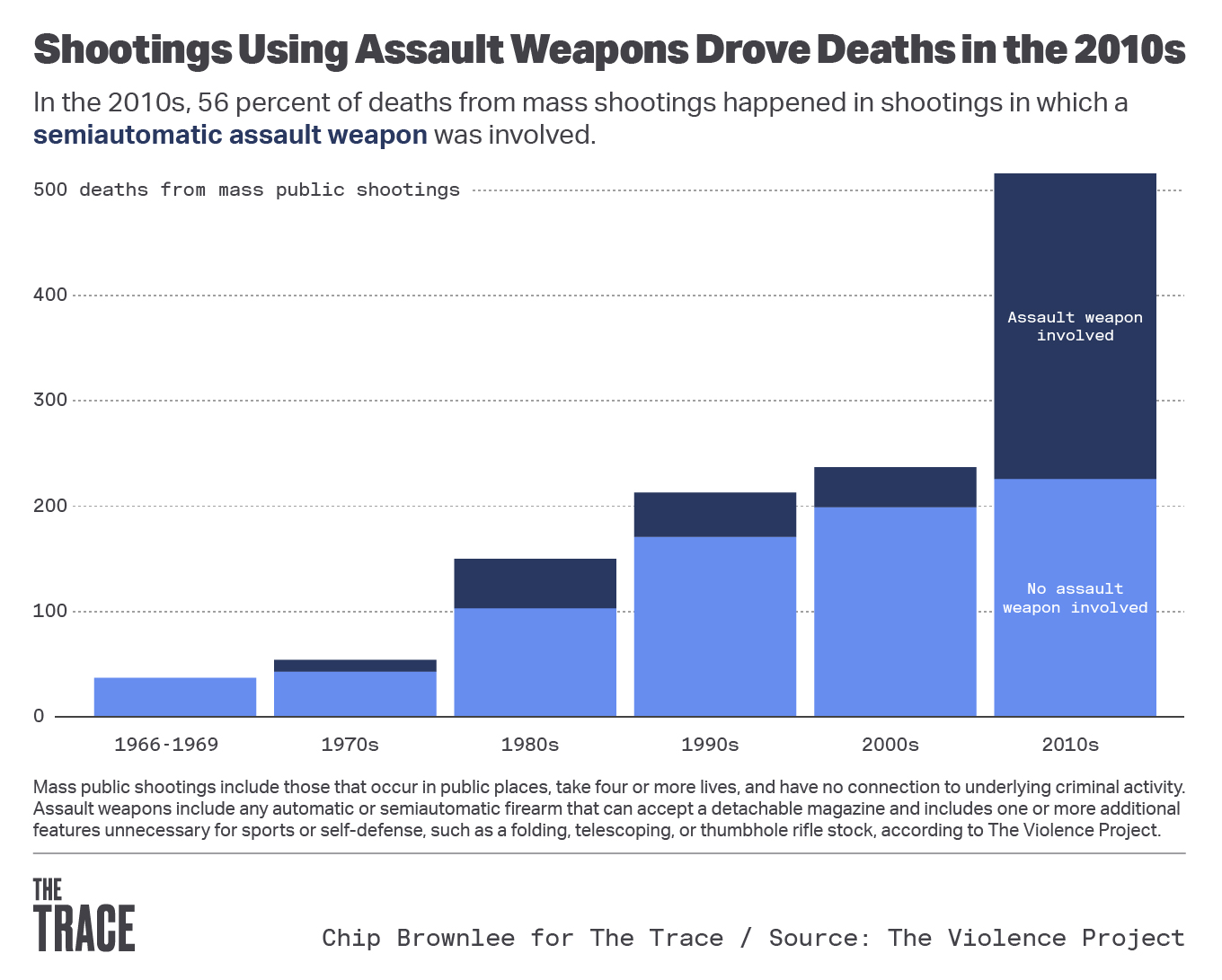Are Handguns or Rifles Used More Often in Mass Shootings?
Concealable handguns have been involved in a majority of mass attacks for decades. But the use of rifles is becoming more common.

Public mass shootings capture the nation’s attention, and understandably so: They’re random, and statistically rare, making them seemingly impossible to prepare for.
The deadliest mass shootings have been perpetrated with military-style rifles, which inflict devastating wounds that are often unsurvivable. This reality has steered the policy debate about how to respond to such incidents, leading to calls to ban rifles like the AR-15 and limit the sale of high-capacity magazines. But mass shootings accounted for less than 2 percent of gun deaths in 2022, according to an analysis of data collected by the Gun Violence Archive. In fact, the vast majority of shootings — including mass shootings — are comitted with handguns.
Several readers have noticed this discrepancy, asking: Aren’t handguns a bigger problem than long guns?
What does the data say about guns used in mass shootings?
The Violence Project, a nonprofit that tracks mass shooting incidents, provides one of the most comprehensive databases of guns used in such attacks.
Before we get into the data, though, it’s important to note that The Violence Project looks at a narrow subset of mass shootings: those that occur in public places, take four or more lives, and have no connection to underlying criminal activity. That means it excludes domestic shootings that take place indoors, as well as shootings in which dozens of people are injured but not killed.
The organization’s data shows that handguns are, in fact, the gun of choice in such attacks. Of 190 incidents dating back to 1966, perpetrators in 80 percent of attacks used at least one handgun, while 28 percent used a semiautomatic assault weapon, like an AR-15 or its variants. Of those shooters who used an assault weapon, 73 percent also carried a handgun.

However, when you look at more recent data, the picture starts to change. In the decade starting in 2010, some 34 percent of incidents involved an assault weapon, while 66 percent didn’t. And if you look at incidents in the last three years, assault weapons rifles have been used in 59 percent of mass shootings.

The data also shows that shootings involving rifles took the most lives. Semi-automatic assault weapons have been used in the deadliest shootings on record — including Las Vegas (2017), Orlando (2016), Sutherland Springs (2017), Sandy Hook (2012), and Uvalde (2022), which is why the weapons are overrepresented in media reports. The perpetrator of a May 2022 mass shooting at a Buffalo, New York, supermarket who killed 10 Black people wrote in an online journal before the attack that he chose a semiautomatic rifle because it’s “very deadly.”

Another database, Gun Violence Archive, tracks shootings in near-real time through news clips and police reports. Over the last decade, 217 mass gun murders — defined as four or more people killed in a single incident — have been perpetrated with handguns, according to GVA, while 38 mass gun murders have been perpetrated with semiautomatic rifles or their variants.
What about all types of gun violence?
When we look beyond mass shootings, handgun use becomes even more prevalent.
According to trace data from the Bureau of Alcohol, Tobacco, Firearms and Explosives, handguns accounted for nearly three-quarters of guns recovered at crime scenes in 2021, while rifles accounted for only 10 percent.
This tracks with varied data released by individual cities: Researchers at George Mason University reported in 2018 that semiautomatic rifles accounted for around 7 percent of guns used in crimes in 10 large cities, including Baltimore, Kansas City, Missouri, and Seattle.
The Federal Bureau of Investigation also tracks the types of guns used in homicides. According to the agency’s Crime Data Explorer, which serves as a repository for national crime stats, 5,992 people were killed with handguns in 2021, the most recent year such data is available. Another 447 people were killed with rifles, accounting for just 4 percent of gun homicides. (An additional 4,711 people were killed with unidentified guns, which could be either handguns or rifles.)
However, FBI data is notoriously incomplete: Law enforcement agencies are not required to submit crime statistics to the database, and only around 60 percent do.
You may also like
-
14-Year-Old Arrested With AR Pistol, Drugs in Backpack By Tom Knighton | 2:29 PM | April 23, 2024
-
Advocates for Gun Rights and Gun Control Descend Upon Illinois State Capitol
-
Judge Grants Second Amendment to Illegals
-
The Biden Administration Is Trying to Expand Background Checks for Gun Sales
-
A Conversation with Jarad Smith, CEO, Ammo, Inc.
